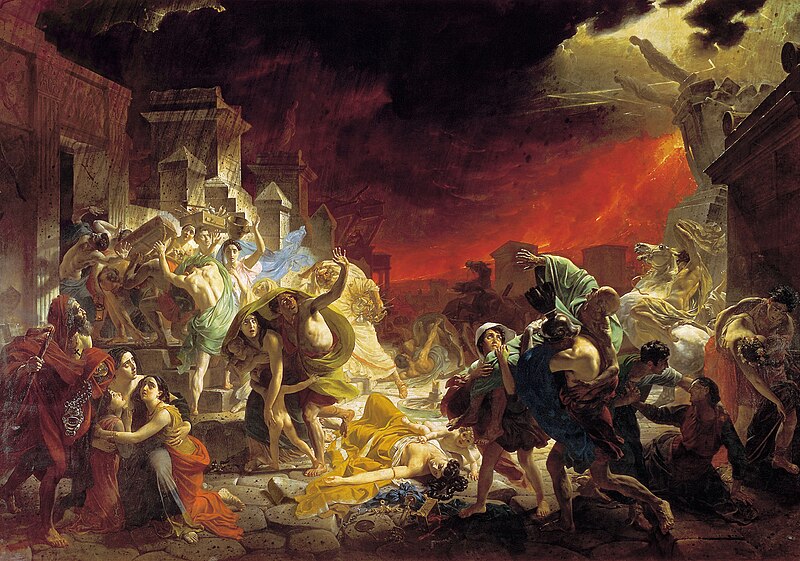Русский: Последний день Помпеи, 1830-1833. Холст, масло. 456,5 x 651 см. Государственный Русский музей, Санкт-Петербург, Россия
Español: El último día de Pompeya, obra realizada por
Karl Briulov entre 1830 y 1833. Óleo sobre tela de 456.5 x 651 cm. exhibido en el
Museo Estatal Ruso de
San Petersburgo,
Rusia.
Background: Karl Briullov visited Pompeii in 1828, and on that occasion he made sketches depicting the eruption of Mount Vesuvius in AD 79. ; the painting made by the artist based on these sketches received much praise at the exhibition held in Rome, bringing Briullov more acclaim and recognition than he could have received for any other work of his. That was the first Russian work of art that caused so much interest abroad, inspiring an anthological poem by Alexander Pushkin, as well as the novel "The Last Days of Pompeii" by Edward Bulwer-Lytton. Thus a classical theme has developed, although including characteristics of romanticism as it has been manifested in Russian art, encompassing drama, tempered realism (mixed) with idealism, an interest in nature, and a fondness for nature. historical themes. A self-portrait is presented in the upper left corner of this painting, under the bell tower, although it is not easy to locate and identify.
Antecedentes:
Karl Briulov visitó
Pompeya en 1828, y en esa oportunidad realizó bocetos representando la
erupción del Monte Vesubio del año 79 d.C. ; la
pintura hecha por el artista en base a estos
bocetos, recibió muchos elogios en la exposición realizada en
Roma, aportando a Briullov más aclamación y reconocimiento que el que pudiera haber recibido por cualquier otra obra suya. Esa fue la primera obra de arte rusa que causó tanto interés en el extranjero, inspirando un poema antológico de
Alexander Pushkin, así como la novela "
Los últimos días de Pompeya" de
Edward Bulwer-Lytton. Así se ha desarrollado un tema clásico, aunque incluyendo características del romanticismo tal como se lo ha manifestado en el arte ruso, al abarcar el drama, el realismo templado (mezclado) con el idealismo, el interés por la naturaleza, y la afición por los temas históricos. Un autorretrato se presenta en la esquina superior izquierda de esta pintura, bajo el campanario, aunque no es fácil de ubicar e identificar.









